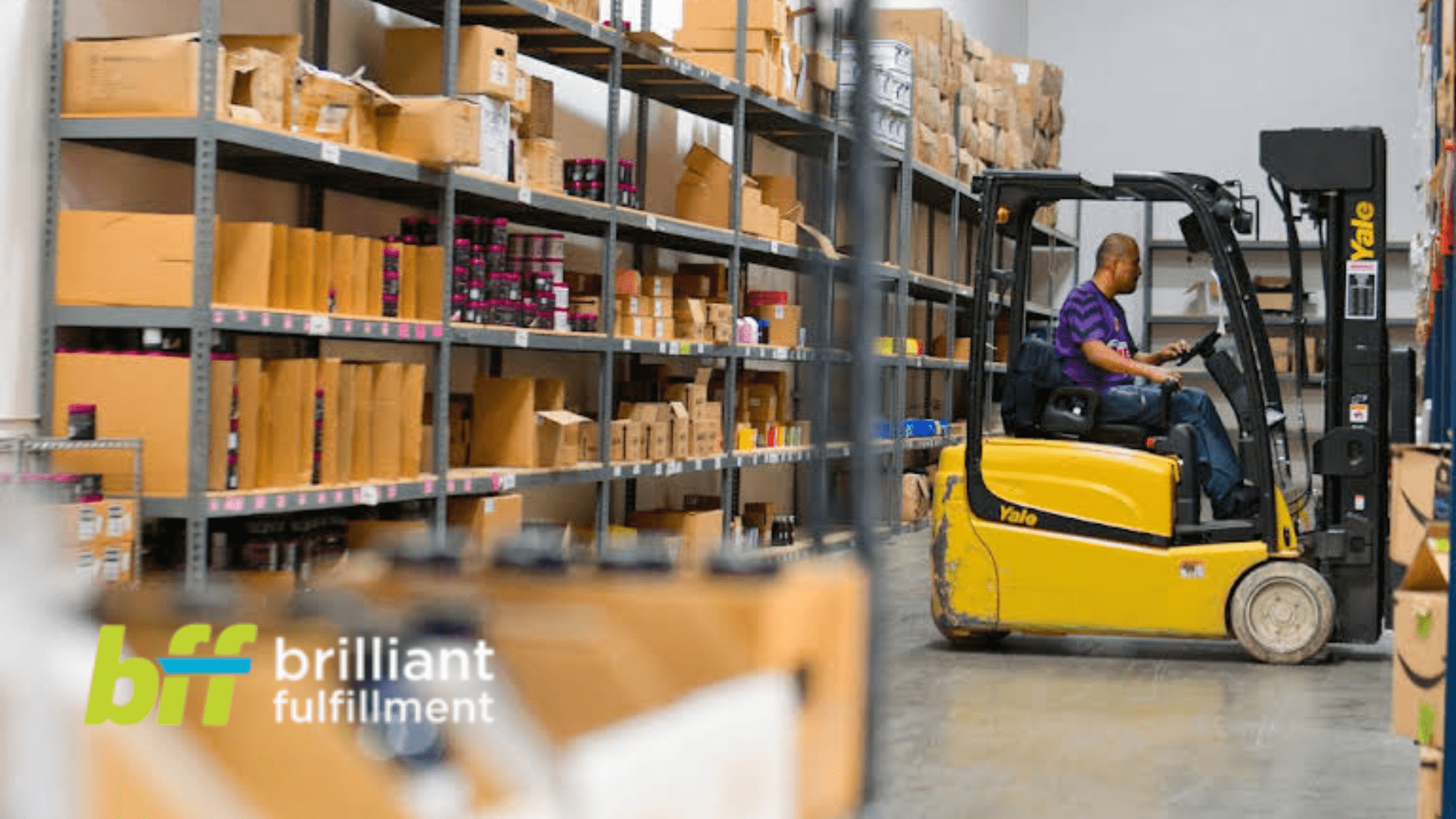Table of Contents
** Minutes
How do misshipments affect customers?
How do misshipments damage businesses?
How to combat and prevent misshipments
Imagine you’ve just bought something online. You’re really excited, and patiently wait the two or three business days it takes for your package to ship. On the estimated day of arrival, you wait…and wait… and wait — only to get an email saying your package was shipped to the wrong place. You’ll have to wait even longer.
Frustrating, right?
Misshipments are often annoying and expensive, for both customers and merchants. Shipping delays due to misshipments can even jeopardize customer loyalty, and cost your business future revenue. To avoid losing customers, it’s crucial for ecommerce businesses to understand how misshipments happen, and how to prevent them.
In this article, we’ll dive deeper into what exactly misshipments are, how they affect your business, and how a fulfilment partner like ShipBob can help you nip misshipments in the bud.
What is a misshipment?
A misshipment happens when an order isn’t shipped correctly. However, there are a few different types of misshipments — that is, a few common mistakes that occur in delivery. These include:
- A package is delivered to the wrong customer. In this scenario, the intended customer does not receive their package, while the package is sent to someone else.
- A package is sent to the correct customer, but contains the wrong items. If a customer orders a hairbrush and comb, but receives a bottle of shampoo, this would be considered a misshipment.
- A package is sent to the wrong postal office or sorting facility. For example, if a package is supposed to be delivered to a carrier facility in Springfield, Illinois, but is accidentally sent to Springfield, Oregon, that would be considered a misshipment.
In all three of these situations, the misshipped package almost always gets delayed or undergoes a delivery exception.
How do misshipments affect customers?
Misshipments are highly inconvenient for customers. Shoppers today expect their orders to be accurate, and their deliveries to be quick — so whether they receive the wrong items or are forced to wait longer, customers will be disappointed by a less-than-perfect shipping experience.
Misshipments also force the customer to expend additional energy to fix a problem they didn’t cause. In addition to the initial disappointment, customers must now go to the trouble of contacting customer support to get the issue resolved. Poor customer service only exacerbates customers, and a lot of back-and-forth is a recipe for frustrated buyers that are unlikely to purchase from you again.
How do misshipments damage businesses?
Disgruntled customers are very unlikely to purchase from your business again, meaning you could see lower retention and conversion rates. They may even go so far as to leave bad reviews online, which will turn away prospective customers from buying your products. In other words, your brand reputation — and, by extension, revenue — could take a major hit as a result of misshipments.
On top of this, businesses must bear the cost of reshipping items. Moreover, rerouting packages to the correct destination and receiving returned items back into inventory can add to your operational costs, making them unnecessarily high.
How to combat and prevent misshipments
To avoid misshipments, your business will need to ensure that the right items are sent to the right locations at the right times. Here are a few tips to help your business improve order accuracy and prevent misshipments.
Perform inventory checks regularly
Picking mistakes and inventory management issues are some of the most common causes behind misshipments. For example, warehousing staff may end up picking the wrong item because it was stored in the wrong shelf, or may pick and pack an expired item that was not cleared out of storage.
Routinely performing inventory checks and auditing your inventory helps ensure that your inventory records are accurate, and match your physical inventory counts. This way, you can make sure that SKUs are stored in the correct locations, which helps minimise picking errors while improving efficiency.
“Because our light bulbs themselves appear identical with only minor differences on the packaging, we used to frequently make picking mistakes, leading to customer frustration and unnecessary return and re-shipping costs. ShipBob ended up being the perfect solution for us and we have never looked back!
Our Merchant Success Manager provided us with an in-depth analysis based on our order history and helped us understand which custom box sizes we should stock ourselves at ShipBob warehouses to help reduce our costs. We feel like ShipBob is a partner that’s in it together with us. We never get the sense that ShipBob is just interested in getting our fulfilment fees. It is much more than that — they really care about our success and what makes us successful as a company.”
Waveform Lighting Team
Use barcode scanners
Improving picking accuracy is crucial to preventing misshipments, so it is crucial that pickers check whether they’ve picked the right items off shelves.
Barcode scanners that automatically sync with your inventory management software can instantly show a picker whether they have the right items, saving time and mispicks.
Some scanners even update inventory records automatically once an item is picked to reflect the change, so that you will have accurate records of the amount of inventory you have left in stock.
Use robust order management software
Many misshipments are simply the result of typos. Even a small mistake when entering customer information such as shipping addresses can make a huge difference in where the order gets routed.
Investing in order management software (or OMS) that automatically captures customer information as orders are placed and sent to your warehouse can go a long way toward avoiding human errors and costly misshipments. With the right OMS, you can ensure that shipping labels are accurately printed to prevent packages from getting routed to the wrong post office or sorting facility.
“ShipBob’s analytics are a huge bonus for a merchant looking to partner with a single 3PL that has a built-in order management tool. I was so stoked about being able to see the optimised layout of where you should be distributing your inventory is great. Having inventory and warehouse management capabilities built into your 3PL is such a value-add, especially for smaller companies.”
Juliana Brasil, Director of Operations at Food Huggers
Set up a quality control system
Quality control is key to any positive shipping experience. Before orders are sealed, you should have a system in place for checking that each order contains the correct, undamaged items. Final quality checks can also be made once the packages are labelled for shipping, which will help to prevent the package from being sent to the wrong location or recipient.
Maintain communication with couriers
Last-mile delivery can also make or break the customer experience, but merchants may have far less control over it than they do fulfilment. By developing strong relationships with major couriers like USPS, FedEx, and UPS, and keeping communication lines open, your business has a better chance of resolving carrier issues or confusions before they snowball into misshipments.
If misshipments do occur, proactive communication with couriers can give you more information to pass on to customers. This keeps customers in the loop, and may help salvage the shipping experience.
Create a seamless returns process
Even if you did everything you could to ensure that orders are shipped out correctly, misshipments can still occur. In these scenarios, providing customers with a seamless returns process is a great way to minimise hassle for the customer and prevent further customer dissatisfaction.
Customers should be able to arrange their returns without having to wait hours to speak to a customer service representative. They should also receive their correct order quickly, without having to pay the reshipment costs themselves.
Partner with a reliable 3PL
When handling fulfilment and shipping in-house, it can be easy for misshipments to slip through the cracks — especially if your business doesn’t have any previous experience or expertise in ecommerce logistics.
Many ecommerce businesses choose to partner with a 3PL (or third-party logistics company) to improve order accuracy and prevent shipping mistakes. With a professional fulfilment company like ShipBob professional managing inventory, picking orders, and connecting with couriers for you, your operations are less prone to misshipments.
“If someone is going to treat your products like their own, that’s the most you can hope for in a fulfilment partner. ShipBob does exactly that. The customer experience and brand consistency is really important to us, so to receive that level of support from ShipBob means so much to us.
This experience also taught us how important it was to involve fulfilment and logistics earlier in the packaging process. Because we don’t operate our own warehouse and fulfilment centres, we need to trust a 3PL team that is going to be invested in delivering our products to the best of their ability.”
Stephanie Lee, COO at PetLab
How ShipBob can help your business prevent misshipments
As a global omnifulfilment platform, ShipBob has the infrastructure, technology, and expertise to deliver top-quality fulfilment and shipping on your brand’s behalf.
With ShipBob’s proprietary inventory and order management software, you can ensure better inventory accuracy and consistency, and gain real-time visibility into operational performance.
ShipBob’s software also integrates directly with your ecommerce store, so that when an order comes in, its customer and shipping information is automatically recorded. This not only minimises the need to manually enter those details while also helping to prevent misshipments.
Moreover, when you store inventory at any of ShipBob’s 30+ fulfilment centre locations, ShipBob’s team will handle picking and packing for you. Outsourcing these operations enables you to save time, and optimises your fulfilment efficiency and shipping costs.
Want to learn more about how ShipBob can provide more accurate fulfilment and minimise shipping mistakes for your business? Click the button below to get in touch with a fulfilment expert.
Misshipments FAQs
Below are answers to some top questions about misshipments.
What are the different types of misshipments?
There are three main types of misshipments: a package delivered to the wrong customer, a package, a package is sent to the correct customer containing the incorrect items, and a package is sent to the wrong postal office or sorting facility.
How do I report a misshipment on Amazon?
You can report a misshipment on Amazon by contacting Amazon Help either through phone, email, or chat.
How much does a misshipment cost?
Considering the various costs associated with initially shipping a misshipment, paying for return shipping, and/or reshipping the replacement order, each misshipment can be costly. Factors such as the product type, the size of the package, its weight, and its destination can cause the cost of each misshipment to vary considerably.



